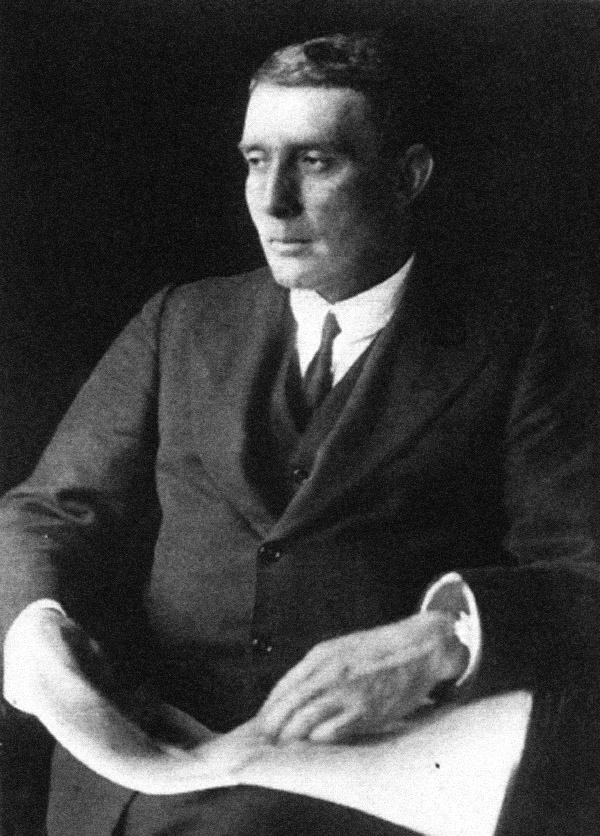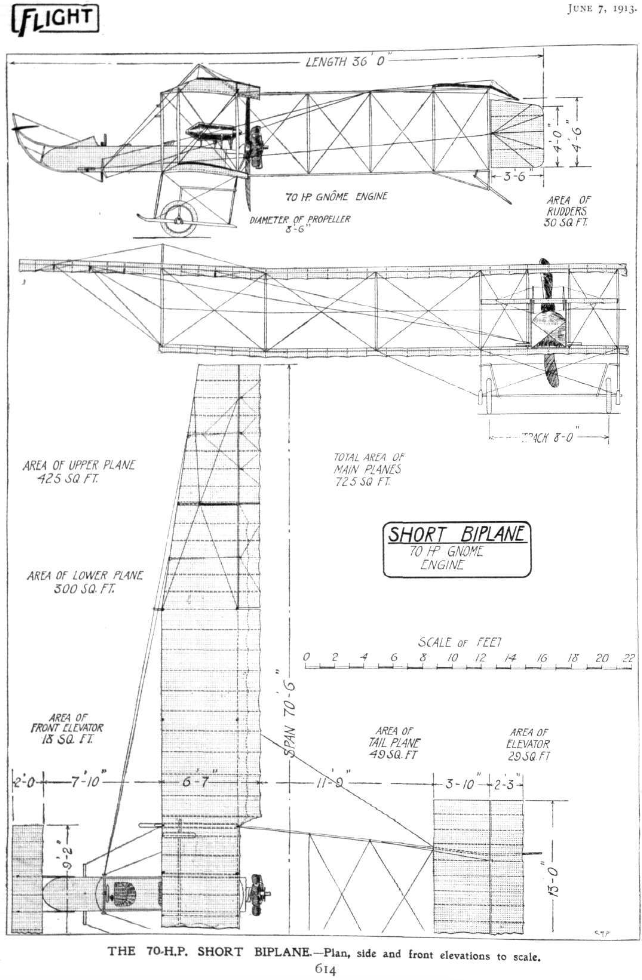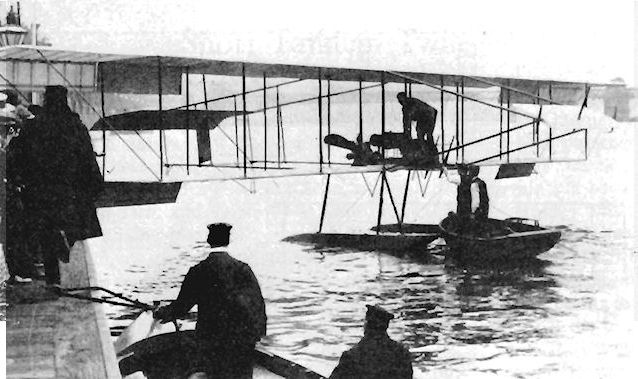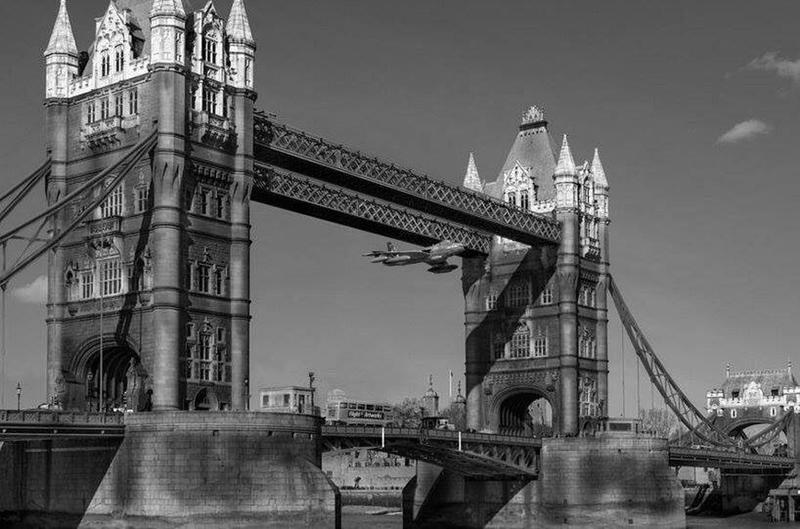
Friday, 5 April 1968: Flight Lieutenant Alan Richard Pollock, No. 1 Squadron, Royal Air Force, based at RAF West Raynham, southwest of Fakenham, Norfolk, was leading a flight of four Hawker Hunter FGA.9 close air support fighters. Pollock described the weather:
“Over London the weather was still one of those rare perfect 8/8 Gordon’s crystal, gin clear days when all the colours shout out brightly.”
Pollock broke away from the formation and flew toward London.
FLIGHT International reported:
Hunter to Tower—Under
An RAF Hunter few through the Tower Bridge, London, in a down-river direction just after noon last Friday, April 5. The Hunter, carrying underwing tanks, was glimpsed momentarily from Flight‘s offices in a descending, mushing turn until lost to sight behind United Africa House. Previous flights through Tower Bridge—never in a jet, and never so fast—have invariably been made in an up-river direction.
The MoD was investigating as we closed for press; the supposition was that the aircraft was an FGA.9 of 1 or 54 Squadrons, which comprise the close-support wing at RAF West Raynham. The station refused comment, but flying was taking place that day. Visibility was excellent. Some authorities attributed the incident to widespread resentment that the RAF had been deprived of a ceremonial fly-past on the 50th anniversary day, April 1. The Red Arrows were expecting to make this fly-past last month, but permission was presumably denied. A Ministry of Defence spokesman to whom we were referred at press time by the duty officer at RAF West Raynham, was not then able to reveal the name of the pilot.
—FLIGHT International, Vol. 93, Number 3083, 11 April 1968, at Page 500, Column 3
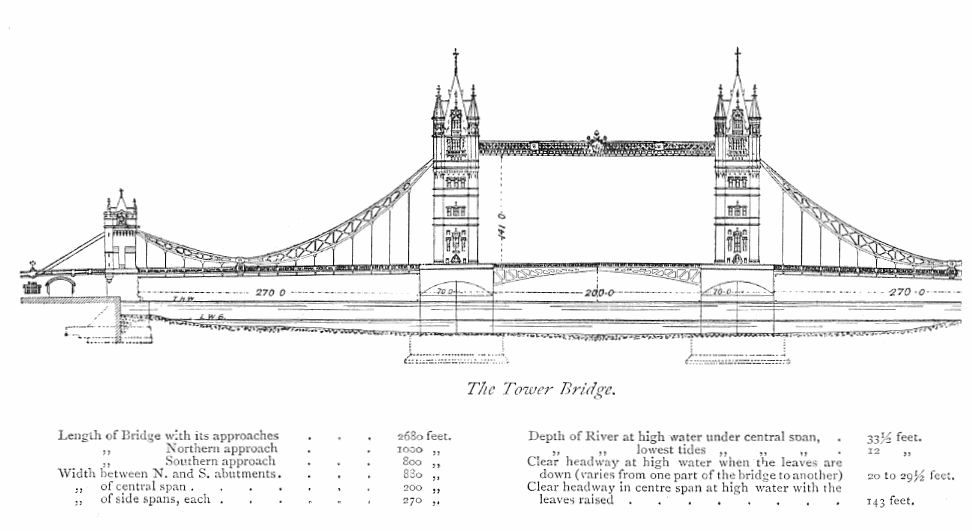
. . . and the following week:
The Man Who Shot the Bridge
The RAF pilot who flew a Hunter FGA.9 through Tower Bridge, London, on April 5 was no youthful prankster but a senior flight commander of 1 Sqn, RAF West Raynham, an Old Cranwellian, and the father of four children.
He was Flt Lt Alan Richard Pollock, aged 32. He was named on Sunday, April 7, by MoD (Air) too late, owing to Easter press schedules, for mention in our last week’s story. Flt Lt Pollock was placed under close arrest on April 5 and released into open arrest on April 7. A board of inquiry was convened at West Raynham on April 8. An all-party motion signed by six MPs [Members of Parliament] was tabled in the Commons in his support but was ruled unacceptable.
Whatever their views on the responsibility and possible consequences of flying a jet fighter through the 200ft-wide, 110ft-deep aperture framed by the towers, the bascules and the upper span of Tower Bridge, there is unanimity among pilots that it was a handsome piece of flying.
Flt Lt Pollock was the first pilot to fly through the bridge in a downstream direction, following the gentle sinuousities of King’s Reach from the Waterloo Bend—and passing over Blackfriars’ two bridges (road and rail), Southwark Bridge, Cannon Street rail bridge, and London Bridge. After clearing the last he probably had little more than five seconds to align himself with the eye of the needle presented by Tower Bridge, retaining until the last fraction of a second the option of pulling up had he found the opening partly obstructed by abnormally high vehicles, by hanging cradles or by the bascules opening.
It has been reported that Flt Lt Pollock peeled off from a formation returning from RAF Tangmere, where he had led four Hunters on display duties. This might have accounted for his choice of direction. The absence of pre-placed photographers, who always seem to have been around on previous Tower Bridge buzzings, seems to rule out premeditation. Another explanation of why he preferred the crane-lined Upper Pool downstream of Tower Bridge for his climb-out when all previous pilots have used it for the run in may have been to avoid climbing through the flight levels occupied by airliners on the approach to Heathrow had he made a westerly climb-out. He turned to port over the City.
The RAF and civil authorities were tussling last week about whether Flt Lt Pollock should be court-martialled or tried in a civil court. His one-man fly-past was construed in and outside the RAF as an expression of resentment felt by many in the Service—including those now responsible for deciding his punishment—of the way the Royal Air Force is being treated by the Government. It may be that the last straw was the cancellation of the 50th anniversary fly-past over the capital on April 1. A fly-past planned in conjunction with the Lancaster House dinner with the Queen was cancelled at the last moment as “inappropriate.” A mid-day fly-past, seen by the maximum number of Londoners and visitors, would have been most “appropriate” on this occasion.
Attitudes to the Tower Bridge exploit of past and present members of the RAF whom we have questioned vary from the very strongly censorious to the frankly admiring; but an unvarying theme was that some RAF protest was called for, without infringing flying discipline.
—FLIGHT International, Volume 93, Number 3084, 18 April 1968 at Page 567, Columns 1 and 2
The Royal Air Force did not court-martial Flight Lieutenant Pollack. A medical board discharged him from the service. The Ministry of Defence announced that Pollack had been hospitalized with pneumonia, and that, “. . . if he were brought to trial it would probably have a damaging effect on his health, both immediately and in the long term.”
An oral history recording with Alan Pollack (32 minutes, 20 seconds) is available at the Imperial War Museum:
https://www.iwm.org.uk/collections/item/object/80027439
This was not the first time an airplane had flown through Tower Bridge. On 10 August 1912, Frank McLean (later, Lieutenant Colonel Sir Francis Kennedy McLean, A.F.C.) flew his modified Short S.33 float plane, and, according to his obituary in The Times, 12 August 1955, “. . . created a record by flying up the Thames in a seaplane, passing between the upper and lower parts of Tower Bridge and under London Bridge without touching the water.”
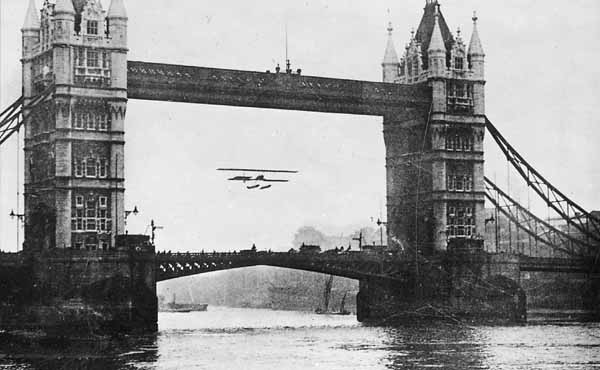
Alan Pollock was flying a Hawker Hunter FGA.9, XF442, c/n S4/U/3318. It had been converted from a Hunter F.6 interceptor. The Hunter was a single-seat, single-engine, swept-wing jet fighter, which first entered service with the Royal Air Force in 1954. The FGA.9 ground attack variant was based on the Hunter F.6 interceptor.
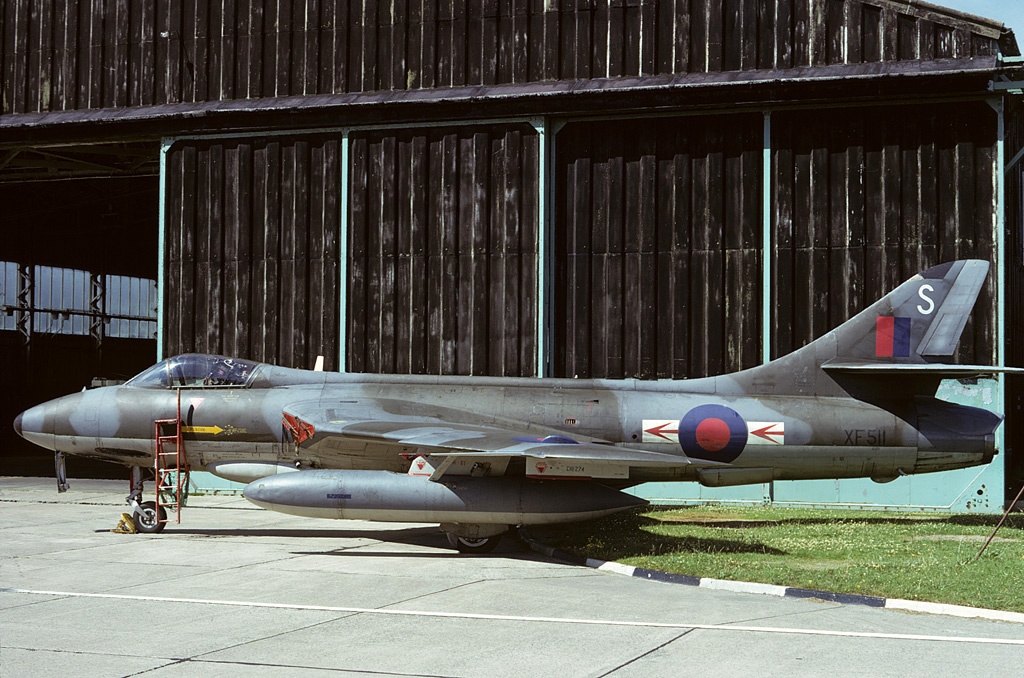
The FGA.9 was 33 feet, 8 inches (10.262 meters) long with a wingspan of 45 feet, 10½ inches (13.983 meters) and height of 13 feet, 2 inches (4.013 meters). The wing area was 340 square feet (31.6 square meters). The wings were swept back 40° at ¼-chord, and had an angle of incidence of 1½°. There is noticeable anhedral. The FGA.9 had and empty weight of 13,010 pounds (5,901 kilograms) and maximum takeoff weight of 18,000 pounds (8,165 kilograms).
The FGA.9 was powered by a single Rolls-Royce RA.28 Avon 207 engine. This was a single-shaft axial-flow turbojet with a 15-stage compressor and 2-stage turbine. The RA.28 was 10 feet, 3.0 inches (3.124 meters) long, 3 feet, 5.5 inches (1.054 meters) in diameter, and weighed 2,869 pounds (1,301 kilograms). It was rated at 10,050 pounds of thrust (44.7 Kilonewtons).
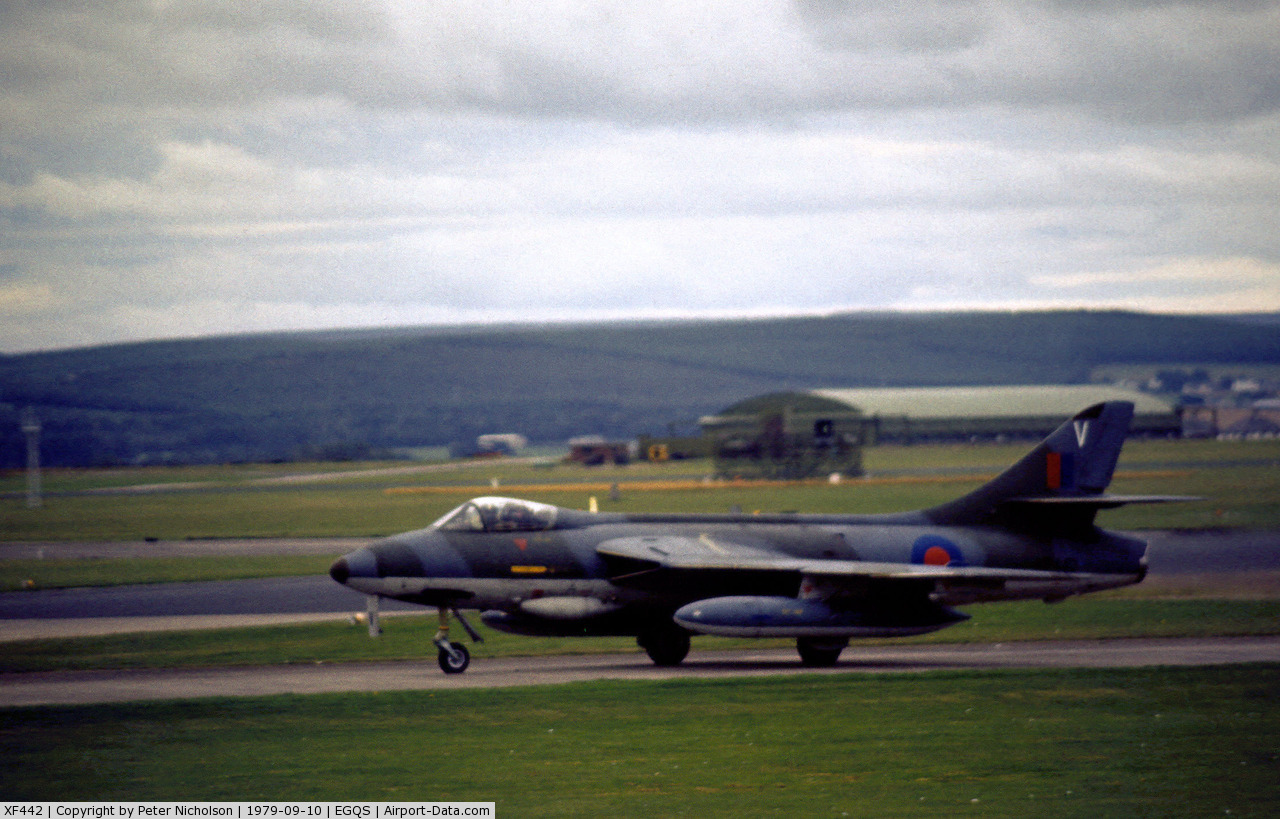
The Hunter FGA.9 had a maximum speed of 702 miles per hour at 15,000 feet (4,572 meters)—0.97 Mach—and maximum range of 1,850 miles (2,977 kilometers) with external fuel tanks.
The basic armament of the Hunter were four 30 mm ADEN autocannon installed in a removable gun pack, along with 150 rounds of ammunition per gun. The ADEN was a gas-operated revolver cannon, capable of firing 1,200–1,400 rounds per minute. The FGA.9 could also carry a 1,000 pounds (454 kilograms) bomb under each wing, twenty-four 3-inch rockets, or two rocket pods with thirty-seven 2-inch rockets, each, for ground attack.
Hawker produced 144 of the Hunter FGA.9 ground attack variant, with 12 modified from F.6 interceptors. Most of Hawker’s foreign sales were based on the FGA.9.
Hawker Hunter FGA.9 XF442 was transferred to the Fuerza Aérea de Chile, 24 April 1982, and assigned identification number J-742. It crashed near Antofagasta, in northern Chile, 20 May 1982.
Alan Pollock was recently interviewed for the Daily Mail:
http://www.dailymail.co.uk/news/article-5571423/RAF-veteran-pilot-82-relives-split-second-decision-fly-busy-Tower-Bridge.html
© 2018, Bryan R. Swopes
